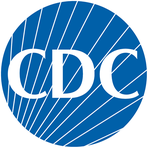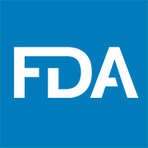Bird Flu Concerns Rise in US Dairy Industry
May 3, 2024, 3:38 am

Location: United States, Georgia, Atlanta
Employees: 10001+
Founded date: 1946
The threat of bird flu spreading to US dairy cows and milk has sparked concerns among experts and health officials. The virus, known as H5N1, has made a dangerous leap from birds to cattle, raising questions about the safety of the milk supply. The US Centers for Disease Control and Prevention are closely monitoring the situation, urging extreme vigilance but assuring the public that the risk to human health is currently low. However, the possibility of the virus mutating and becoming more transmissible between people is a cause for concern.
The recent outbreaks in nine US states have highlighted the need for increased testing and surveillance in the dairy industry. The presence of viral fragments in the milk supply has raised alarms about the potential for asymptomatic infected cows spreading the virus undetected. The US Department of Agriculture has taken steps to prevent infected cattle from crossing state borders, but more rigorous testing is needed to ensure the safety of the milk supply.
Experts warn against consuming raw or unpasteurized dairy products, as they pose a higher risk of contamination with harmful pathogens, including bird flu. Pasteurization has been effective in killing off the virus in milk, but raw milk remains a concern due to its potential for transmitting infections. The CDC advises against consuming raw milk, citing the risk of foodborne illnesses that can cause severe symptoms like diarrhea, stomach cramping, and vomiting.
The availability of vaccines for pandemic flu strains like H5N1 offers some reassurance, with pre-authorised vaccines that can be quickly adapted to target specific variants. The CDC has shared candidate vaccine virus 2.3.4.4b with manufacturers, paving the way for rapid production and approval once the exact pandemic strain is identified. However, the potential for reassortment of flu viruses in animals like pigs poses a significant threat, as it could lead to the emergence of a new strain with the ability to infect humans.
In conclusion, the bird flu outbreak in US dairy cattle underscores the need for heightened vigilance and proactive measures to prevent the spread of the virus. The safety of the milk supply is paramount, and consumers are advised to avoid raw dairy products to reduce the risk of infection. With ongoing surveillance and testing, health officials hope to contain the spread of bird flu in the dairy industry and protect public health.
The recent outbreaks in nine US states have highlighted the need for increased testing and surveillance in the dairy industry. The presence of viral fragments in the milk supply has raised alarms about the potential for asymptomatic infected cows spreading the virus undetected. The US Department of Agriculture has taken steps to prevent infected cattle from crossing state borders, but more rigorous testing is needed to ensure the safety of the milk supply.
Experts warn against consuming raw or unpasteurized dairy products, as they pose a higher risk of contamination with harmful pathogens, including bird flu. Pasteurization has been effective in killing off the virus in milk, but raw milk remains a concern due to its potential for transmitting infections. The CDC advises against consuming raw milk, citing the risk of foodborne illnesses that can cause severe symptoms like diarrhea, stomach cramping, and vomiting.
The availability of vaccines for pandemic flu strains like H5N1 offers some reassurance, with pre-authorised vaccines that can be quickly adapted to target specific variants. The CDC has shared candidate vaccine virus 2.3.4.4b with manufacturers, paving the way for rapid production and approval once the exact pandemic strain is identified. However, the potential for reassortment of flu viruses in animals like pigs poses a significant threat, as it could lead to the emergence of a new strain with the ability to infect humans.
In conclusion, the bird flu outbreak in US dairy cattle underscores the need for heightened vigilance and proactive measures to prevent the spread of the virus. The safety of the milk supply is paramount, and consumers are advised to avoid raw dairy products to reduce the risk of infection. With ongoing surveillance and testing, health officials hope to contain the spread of bird flu in the dairy industry and protect public health.
